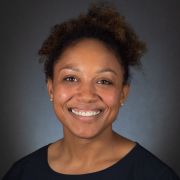- NYC and San Francisco make the top 10 of most expensive cities to build in globally
- Labor shortages and regulatory complexity, fuel cost escalation as new global dynamics shape development realities
- Bright spots emerge in growth areas such as energy infrastructure and data centers as clients reallocate global resources to meet shifting demand
- Arcadis urges proactive design and planning to unlock long-term project value
NEW YORK, NY - 13 May 2025 - According to the latest Arcadis International Construction Costs (ICC) Report, released today, New York City and San Francisco remain in the top ten most expensive cities to build in in the world. The report highlights continued pressure on construction costs across major urban centers in North America and Europe.
In cities like New York and San Francisco, the combination of dense urban environments, high land values, and the need for specialized construction methods further drives up costs. Meanwhile, cities such as Boston and Seattle contend with rising material prices and infrastructure demands, while Los Angeles and Las Vegas navigate the financial impacts of adapting to climate-resilient construction.
Despite rising construction costs, Arcadis reports construction activity continues to thrive. Arcadis notes that growth opportunities remain strong in key sectors such as data centers, healthcare, and social infrastructure such as education and healthcare. In the US, policy priorities heavily focus on attracting industrial investment, such as TSMC and Nvidia announcing multi-billion-dollar investment programs in Arizona and Texas. Construction in cities like Los Angeles continues to accelerate in preparation for mega global events such as the upcoming FIFA World Cup and the LA28 Olympics, highlighting the demand for and investment in infrastructure and development projects.
The annual Arcadis International Construction Costs index covers 100 of the world’s large cities across six continents. The cost comparison was developed covering twenty different building types, including residential, commercial, and public sector developments, and is based on a survey of construction costs, a review of market conditions, and the professional judgement of Arcadis’s global team of experts. The calculations are based in USD and indexed against the price range for each building type relative to Amsterdam.
Jeanne Wood, Global Director, Clients and Business Development at Arcadis, said: “While the United States remains one of the most expensive regions to build in, construction activity continues to thrive. Driven by demand across sectors such as data centers, healthcare, and social infrastructure, the ongoing cycle of construction highlights the resilience of the industry, even in the face of persistent challenges such as financial and time constraints, and labor availability. A proactive approach to design, specification, and collaboration can unlock opportunities to drive value, whether it's enhancing energy efficiency, leveraging digital tools for better delivery, or ensuring adaptability for the future. By focusing on long-term resilience and innovation, the construction sector can continue to evolve and implement long term solutions.”
Arcadis outlines four important considerations for managing construction risk and maximizing project value in the current environment:
- Design for Long-Term Value: Focus on buildings that are adaptable, energy-efficient, and designed for evolving user needs. This was a key factor in Arcadis’ approach to the design of River Grove Elementary School in Portland, Oregon. The building needed to be adaptable, energy-efficient, and resilient in the face of extreme weather events. By incorporating a microgrid system, which includes a photovoltaic array, battery storage, and generator to ensure independence from the grid during disasters, the new school embraces resilience and carbon neutrality, and can still function as an effective learning environment in an increasingly hot and wildfire-prone region.
- Design for Certainty: Leverage knowledge of the asset, the location and its market to ensure that a scheme represents the best development that can be delivered. Parametric design tools can help to de-risk planning, enhance investor confidence, and align the project with policy and market expectations.
- Design for Delivery: Drive buildability and compliance with budget by working with integrated teams who manage end-to-end project details using coordinated digital platforms and proven delivery frameworks. This was critical during the renovation of the Tiffany & Co. Landmark store on New York’s Fifth Avenue. As Architect of Record, Arcadis used digital tools to test and iterate design solutions throughout the lifecycle of the project, enhancing customer movement around the store while working within the constraints of the existing historical structure.
- Design in Collaboration: Recognize that no-one can do it alone. High-performing, cross-disciplinary teams with strong leadership and a culture of shared accountability are essential to unlock project potential.
Mansoor Kazerouni, Global Director of Architecture and Urbanism at Arcadis, added: “Development is a hugely challenging undertaking. High levels of uncertainty triggered by economic and political change have created a tough environment for getting projects off the ground. We know that buildings need to work even harder to meet the needs of their users, and that means treating every part of a scheme as a chance to maximize impact. As designers, our role is to lead with insight, creativity and commitment at every stage of the project - unlocking potential, supporting our clients, and delivering spaces that are buildable, sustainable, and valuable for the long term.”
For more information, the full report can be downloaded here.
